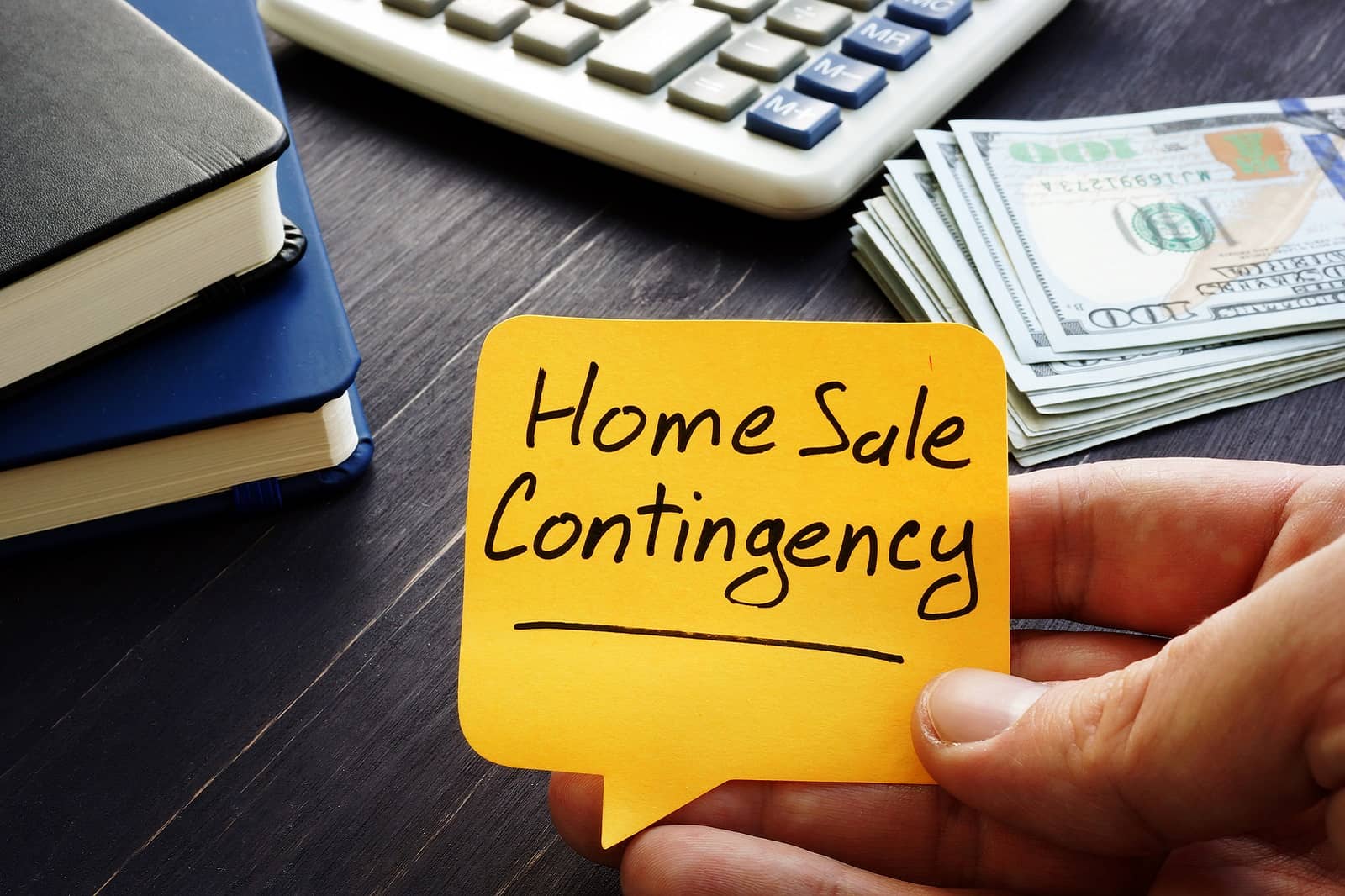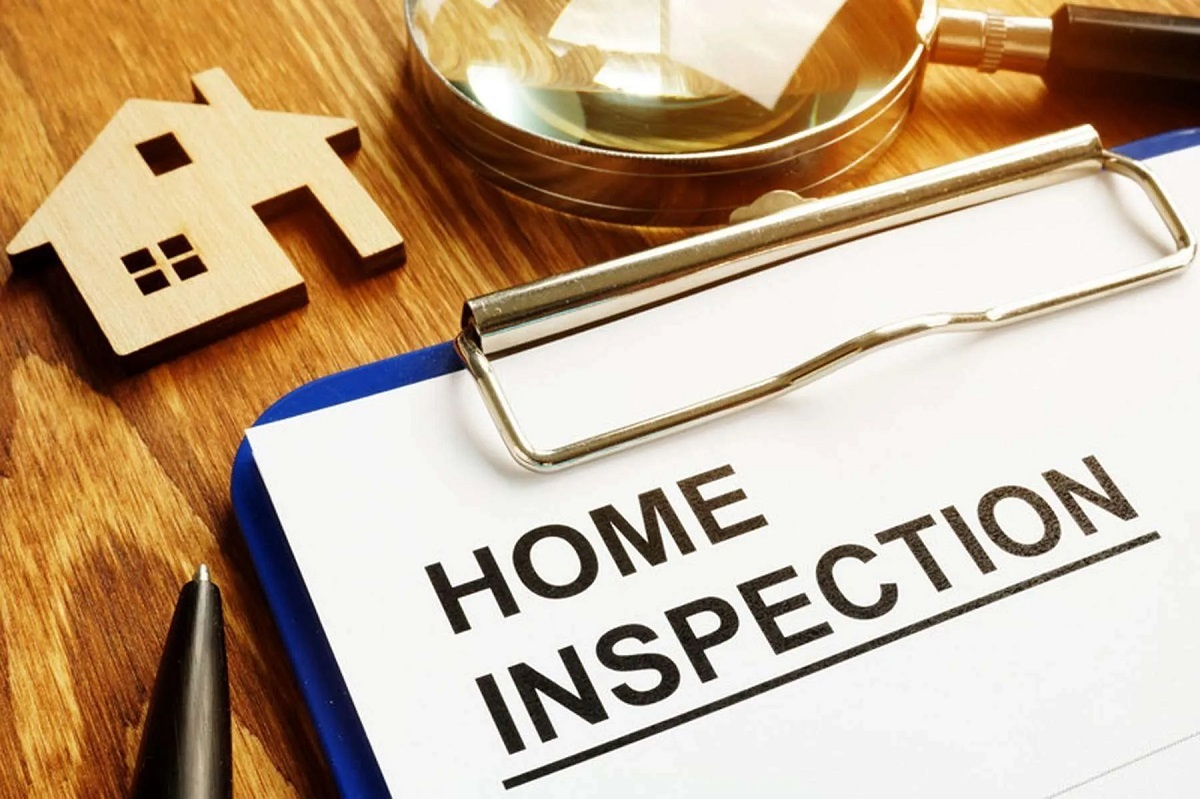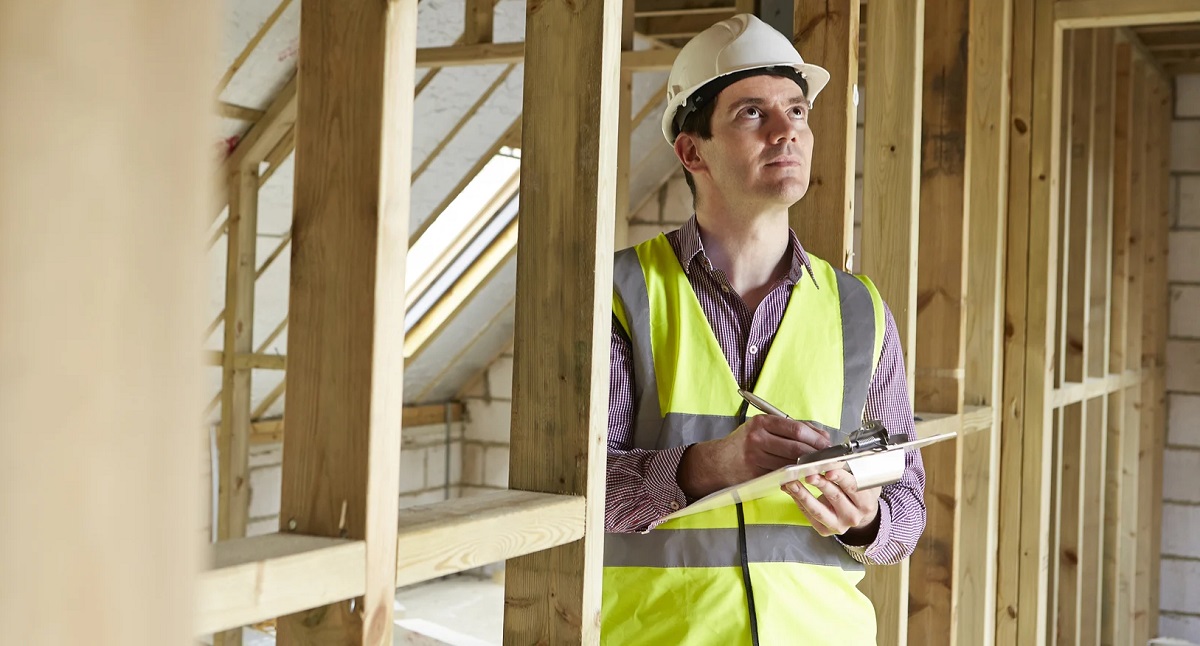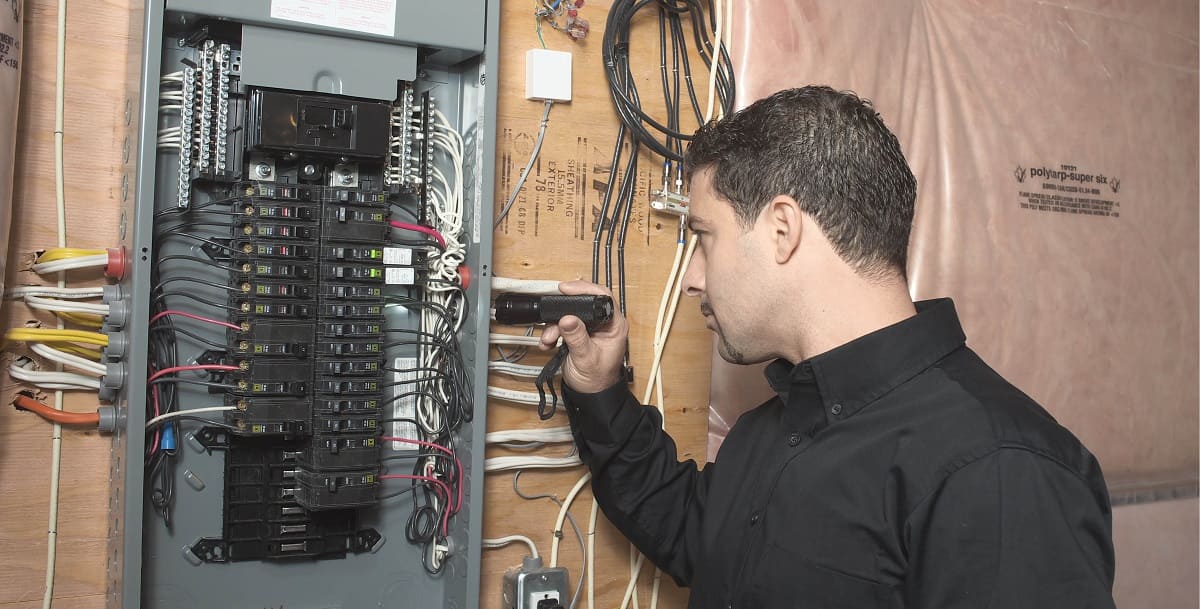Home>Home Maintenance>When Does The Buyer Remove The Inspection Contingency?


Home Maintenance
When Does The Buyer Remove The Inspection Contingency?
Modified: March 6, 2024
Discover when buyers typically remove the inspection contingency during the home buying process. Learn more about this important step in home maintenance.
(Many of the links in this article redirect to a specific reviewed product. Your purchase of these products through affiliate links helps to generate commission for Storables.com, at no extra cost. Learn more)
Introduction
Welcome to the world of home buying, where countless details and contingencies shape the purchasing journey. One of the most crucial steps in the home-buying process is the inspection contingency. This contingency provides the buyer with the opportunity to thoroughly assess the condition of the property before finalizing the sale.
Understanding the intricacies of the inspection contingency is essential for both buyers and sellers. In this article, we will dive into the timeline of the inspection contingency and explore the various stages involved in this critical aspect of the home-purchasing process.
From completing the initial inspection to negotiating repairs and ultimately waiving the contingency, we will guide you through each step, helping you navigate this complex process with ease and confidence.
So, let’s get started by examining the purpose and importance of the inspection contingency.
Key Takeaways:
- Buyers can remove the inspection contingency after completing the initial inspection, reviewing the report, negotiating repairs, and feeling satisfied with the property’s condition. This marks a significant milestone in the home-buying process.
- Requesting additional inspections for specific concerns, negotiating repairs or credits, and deciding to waive the inspection contingency are crucial steps in the home-buying journey. It’s important to make informed decisions and seek professional guidance.
Understanding Inspection Contingencies
When you make an offer to purchase a home, it is common practice to include an inspection contingency in the offer contract. An inspection contingency gives you, as the buyer, the opportunity to have the property inspected by a professional home inspector within a specified timeframe, typically 7-10 days.
The purpose of the inspection contingency is to protect the buyer by allowing them to assess the condition of the property and identify any potential issues or defects. This way, you can make an informed decision about whether to proceed with the purchase, negotiate repairs or credits with the seller, or even cancel the transaction if significant problems are discovered.
During the inspection period, you will hire a certified home inspector to thoroughly examine the property. The inspector will assess various aspects of the home, including the structural integrity, electrical systems, plumbing, HVAC, roof, and any other areas deemed necessary. They will provide you with a detailed report that outlines their findings and recommendations.
It is important to note that the inspection contingency is typically a negotiable component of the purchase agreement. Buyers can request certain types of inspections, such as pest inspections or radon testing, depending on the specific concerns related to the property. These additional inspections may come at an extra cost but can provide valuable insights into the condition of the home.
Now that we have a basic understanding of what an inspection contingency entails, let’s explore the timeline of the inspection process in the next section.
Timeline of the Inspection Contingency
The inspection contingency is a time-bound process that typically begins once the purchase agreement is signed by both parties. Let’s now take a closer look at the various stages of the inspection timeline:
- Offer Acceptance: After the seller accepts your offer, the inspection contingency period begins. This is usually within 24 to 48 hours of offer acceptance.
- Research and Hire an Inspector: It’s important to find a reputable and certified home inspector during this time. You may consider seeking recommendations, reading reviews, or consulting with your real estate agent to find a qualified professional. Aim to schedule the inspection within the agreed-upon timeframe.
- Complete the Initial Inspection: The home inspector will conduct a thorough examination of the property, evaluating its various systems, components, and structural elements. This may take a few hours depending on the size and complexity of the home.
- Review the Inspection Reports: Once the initial inspection is complete, the inspector will provide you with a detailed report outlining their findings. Take the time to carefully review and understand the report, paying attention to any significant issues or safety concerns highlighted by the inspector.
- Negotiate Repairs or Credits: If the inspection report reveals major defects or necessary repairs, you can enter into negotiations with the seller to address these issues. You may request repairs to be completed prior to closing, or ask for credits towards the purchase price so that you can handle the repairs yourself after closing.
- Request Additional Inspections: Depending on the findings of the initial inspection, you may consider requesting additional inspections for specific areas of concern. This could include specialized inspections for issues such as mold, radon, or termite infestation. Keep in mind that additional inspections may require additional time and cost.
- Waiving or Removing the Inspection Contingency: Once you are satisfied with the inspection reports and any agreed-upon repairs or credits, you can choose to waive or remove the inspection contingency. This decision is typically made within the agreed-upon contingency period and is a significant milestone in the home-buying process.
- Finalize the Sale Agreement: With the inspection contingency removed, the sale agreement moves forward towards closing. It’s important to stay in touch with your lender, real estate agent, and other relevant parties to ensure a smooth and timely transaction.
Understanding the timeline of the inspection contingency is crucial to managing your expectations and making informed decisions during the home-buying process. Keep in mind that this timeline can vary depending on the specific terms of your purchase agreement and local real estate practices.
Next, we will delve into the process of completing the initial inspection. Stay tuned!
Completing the Initial Inspection
Once the initial inspection is scheduled, it’s time to roll up your sleeves and dive into the examination of the property. The initial inspection is a critical step in the inspection process as it provides you with an in-depth assessment of the home’s condition. Here’s what you need to know:
1. Engage a Certified Home Inspector: Before the scheduled inspection, hire a certified and experienced home inspector. Your real estate agent may be able to recommend a few inspectors, but it’s always a good idea to do your own research and find someone you trust.
2. Attend the Inspection: Whenever possible, try to be present during the inspection. This allows you to accompany the inspector and ask questions as they assess the property. Being physically present also helps you gain a better understanding of any issues or concerns that the inspector may point out.
3. Thoroughly Assess the Exterior: The inspection will include a detailed examination of the exterior of the home. The inspector will check the roof for any signs of damage or leaks, inspect the foundation for cracks or settling, and examine the condition of the siding, windows, doors, and any other external components. They may also assess the grading and drainage to ensure proper water flow away from the property.
4. Evaluate the Interior: Once the exterior assessment is complete, the inspector will move inside the home. They will scrutinize the electrical systems, plumbing fixtures, heating and cooling systems, and verify that they are all in proper working order. The inspector will also examine areas such as the attic, basement, and crawl spaces for signs of moisture, mold, or other concerns.
5. Document and Take Notes: As the inspector conducts their examination, take detailed notes and photographs of any issues or concerns they identify. This documentation will be helpful during negotiations with the seller or when seeking further assessments or estimates. It ensures that you have a clear record of the property’s condition.
6. Ask Questions: Don’t hesitate to ask the inspector about any specific concerns you may have or to seek clarification on their findings. A good home inspector will gladly answer your questions and provide additional information to help you understand the condition of the property.
7. Await the Inspection Report: Once the inspection is complete, the inspector will prepare a thorough report that outlines their findings. This report will provide you with valuable insights into the condition of the property and any areas that may require attention or repairs.
By actively participating in the initial inspection, you can gain a comprehensive understanding of the property’s condition. This knowledge empowers you to make informed decisions, negotiate repairs or credits, and move forward confidently in the home-buying process.
With the initial inspection completed, it’s time to review the inspection reports in detail. We will explore this crucial step in the next section. Stay tuned!
Reviewing Inspection Reports
After the completion of the initial inspection, you will receive a detailed inspection report from the professional home inspector. This report is a crucial document that provides a comprehensive breakdown of the property’s condition. Let’s explore the important aspects of reviewing the inspection reports:
1. Obtain the Inspection Report: Typically, the inspector will provide you with a digital or printed copy of the inspection report within a few days of the inspection. It is essential to review this report thoroughly to gain a clear understanding of any issues or concerns identified during the inspection.
2. Pay Attention to Significant Issues: The inspection report will highlight any significant issues found during the inspection. These may include problems with the foundation, electrical systems, plumbing, HVAC, roof, or other major components of the property. Take note of these issues as they may require further evaluation or negotiation with the seller.
3. Understand the Severity of the Problems: The inspection report will categorize the identified issues based on their severity. Some problems may be minor and easily addressable, while others may present significant concerns that require immediate attention. Pay attention to the severity ratings so you can prioritize necessary repairs or negotiations.
4. Seek Clarification if Needed: If there are any technical terms or descriptions in the inspection report that you do not understand, don’t hesitate to reach out to the home inspector for clarification. It’s important to have a clear understanding of the identified issues to make informed decisions.
5. Consult with Professionals if Necessary: For more complex issues identified in the inspection report, consider consulting with specialists in specific areas of concern. This might include electricians, plumbers, or structural engineers who can provide a more in-depth analysis and recommendations for repairs or replacements.
6. Assess Potential Costs: Reviewing the inspection report will give you an idea of any potential costs associated with addressing the identified issues. Evaluate the estimated costs for repairs or replacements and factor them into your budget and overall decision-making process.
7. Consider the Age and Condition of the Property: Keep in mind that no home is perfect, and some wear and tear are to be expected, especially in older properties. Consider the age and overall condition of the home when reviewing the inspection report. Focus on the issues that pose immediate concerns or could pose long-term risks if left unaddressed.
Reviewing the inspection report thoroughly and understanding its implications is crucial in making informed decisions as a buyer. This report will serve as a valuable tool to negotiate repairs or credits with the seller, make decisions on further inspections, or even determine whether to proceed with the purchase.
Next, we will explore the process of negotiating repairs or credits. Stay tuned!
The buyer typically removes the inspection contingency after completing a satisfactory home inspection and negotiating any necessary repairs or credits with the seller. This is usually done within a specified timeframe outlined in the purchase agreement.
Negotiating Repairs or Credits
Upon reviewing the inspection report and identifying significant issues, you may choose to negotiate repairs or credits with the seller. This step aims to address any necessary repairs or improvements to the property before closing the deal. Here’s what you need to know about negotiating repairs or credits:
1. Prioritize the Essential Repairs: Start by identifying the most critical repairs that need to be addressed before closing. Focus on issues that pose safety concerns or could significantly impact the functionality or livability of the home. These are the repairs to prioritize during negotiations.
2. Seek Estimates: Obtain estimates from reputable contractors or specialists for the repairs or replacements needed. Having professional estimates will help you gauge the potential costs involved and strengthen your position during negotiations.
3. Get Multiple Quotes: If possible, it’s advisable to obtain multiple quotes for the repairs required. This allows you to compare prices, assess the quality of work offered, and negotiate based on the information gathered. Remember, negotiating credits can sometimes be a more viable option than repairs, depending on the situation.
4. Discuss with Your Real Estate Agent: Consult with your real estate agent to develop a strategic negotiation plan. They will provide valuable insights based on their experience and assist you in formulating the best approach to present your repair or credit requests to the seller.
5. Assess the Seller’s Response: The seller may accept your repair or credit request as-is, propose alternative solutions, or reject your proposal altogether. In some cases, a counteroffer may be presented, allowing room for further negotiations. Keep an open line of communication with the seller to understand their perspective and find common ground.
6. Consider the Financial Impact: When negotiating repairs or credits, it’s essential to consider the financial implications for both parties. Remember that the seller may have a limit to what they are willing to address, while you need to ensure the repairs or credits are reasonable and sufficient to address the identified issues.
7. Document Agreements in Writing: Once an agreement is reached, whether it involves repairs or credits, make sure to document it in writing and include it as an addendum to the purchase agreement. This formalizes the agreed-upon terms and ensures that both parties are on the same page.
Negotiating repairs or credits is a critical step in the home-buying process, allowing you to address any significant issues that could affect the property’s value or your future enjoyment. By effectively communicating your needs and being open to compromise, you can work toward a mutually beneficial solution with the seller.
Next, we will discuss the importance of requesting additional inspections when necessary. Stay tuned!
Requesting Additional Inspections
While the initial home inspection provides a comprehensive evaluation of the property, there may be specific areas of concern that require further investigation. In such cases, requesting additional inspections can provide you with greater peace of mind and a deeper understanding of the property’s condition. Here’s what you need to know about requesting additional inspections:
1. Identify Areas of Concern: During the initial inspection or upon reviewing the inspection report, you may identify specific areas that require further examination. These concerns could range from suspected mold or radon presence to the potential for termite infestation. Identifying these areas will help you determine which additional inspections may be necessary.
2. Consult with Your Home Inspector: Reach out to your home inspector to discuss the areas of concern and seek their professional opinion. They can provide guidance on whether additional inspections are warranted and recommend qualified specialists for the job.
3. Research Qualified Specialists: When requesting additional inspections, it is crucial to hire qualified specialists who have expertise in the specific areas of concern. Whether it’s a mold inspector, termite inspector, or radon specialist, do your due diligence to find reputable professionals with relevant certifications and experience.
4. Coordinate Scheduling and Access: Work with your real estate agent to coordinate the scheduling of additional inspections with the seller. Ensure that you have proper access to the property for the specialists to conduct their assessments effectively.
5. Review Additional Inspection Reports: Once the additional inspections are completed, carefully review the reports provided by the specialists. Pay attention to their findings, recommendations, and any potential issues they identify. This information will further enhance your understanding of the property’s condition.
6. Evaluate the Importance of Findings: Assess the significance of the additional inspection findings in relation to the overall condition of the property. Some issues may require immediate attention and impact your decision to proceed with the purchase, while others may be less critical and can be addressed after closing.
7. Use Findings for Further Negotiations: If the additional inspection reports uncover significant issues, you can use them as leverage for further negotiations with the seller. This can include requesting repairs, credits, or even revisiting the overall purchase price based on the newfound information.
Requesting additional inspections demonstrates your commitment to thoroughly assessing the property and ensures that you have a clear understanding of any issues or concerns. By addressing specific areas of concern, you can make more informed decisions and negotiate with confidence during the home-buying process.
Now that we have explored the process of requesting additional inspections, let’s move on to discussing the importance of waiving or removing the inspection contingency. Stay tuned!
Waiving or Removing the Inspection Contingency
Once you have completed the initial inspection, reviewed the inspection reports, negotiated repairs or credits, and potentially conducted additional inspections, you will reach a crucial decision point in the home-buying process: whether to waive or remove the inspection contingency. Here’s what you need to know about this important step:
1. Understand the Purpose of the Inspection Contingency: The inspection contingency exists to protect the buyer by allowing them to thoroughly assess the condition of the property and negotiate repairs or credits with the seller. It provides the opportunity to address any significant issues that could impact the value or livability of the home.
2. Assess the Inspection Findings: Carefully evaluate the inspection reports, including any additional inspection findings, and assess the severity and significance of the identified issues. Consider whether the repairs or credits negotiated with the seller adequately address any concerns and whether you feel confident proceeding with the purchase despite any remaining issues.
3. Consult with Professionals: It can be helpful to consult with your real estate agent, a trusted home inspector, or other relevant professionals to obtain their insights and advice on whether to waive or remove the inspection contingency. They can provide valuable guidance based on their experience and knowledge of the local real estate market.
4. Review Your Financing and Contingencies: Take into account any financing or other contingencies that may be tied to the inspection contingency. Consider the implications of waiving or removing the inspection contingency on your ability to secure financing and any other contingencies in the purchase agreement.
5. Evaluate Your Risk Tolerance: Consider your personal risk tolerance when deciding whether to waive or remove the inspection contingency. Are you comfortable proceeding with the purchase without being fully aware of any potential underlying issues? Are you willing to take on the responsibility of addressing any future repairs or problems that may arise?
6. Negotiate a Freeing Agreement: If you decide to proceed without the inspection contingency, consider negotiating a freeing agreement with the seller. This agreement stipulates that the buyer will not raise any further concerns or requests for repairs or credits after the inspection contingency is waived or removed.
7. Seek Legal Advice if Necessary: In some cases, it may be wise to seek legal advice before waiving or removing the inspection contingency. An attorney can provide guidance specific to your situation and help ensure that you are making an informed decision.
Waiving or removing the inspection contingency is a significant step in the home-buying process. It indicates your readiness to move forward with the purchase, accepting the property’s condition as-is. It’s important to make this decision carefully and based on a thorough evaluation of the inspection findings, negotiations, and your personal circumstances.
In our final section, we will discuss the steps involved in finalizing the sale agreement. Stay tuned!
Finalizing the Sale Agreement
After completing the inspection process, negotiating repairs or credits, and potentially waiving the inspection contingency, you are now ready to move towards finalizing the sale agreement. This phase involves several important steps to ensure a smooth and successful transaction. Let’s delve into the finalization process:
1. Prepare for Closing: As the buyer, it’s crucial to be prepared for the closing process. This includes gathering all necessary documents, such as proof of insurance, financing papers, and any required certifications or permits. Work closely with your real estate agent and lender to ensure everything is in order.
2. Perform a Final Walk-Through: Before closing, conduct a final walk-through of the property to ensure it is in the agreed-upon condition. Verify that all repairs and improvements negotiated in the purchase agreement have been completed satisfactorily. If any new issues arise during the walk-through, address them with the seller as soon as possible.
3. Coordinate with Your Lender: Stay in close communication with your lender to ensure that all necessary financing documents are processed and ready for closing. Keep them informed of any changes or updates to the purchase agreement, repairs, or other contingencies.
4. Hire a Title Company: The buyer is typically responsible for hiring a title company to conduct a title search and prepare the necessary documents for transferring ownership. The title company ensures that there are no legal issues or encumbrances on the property’s title that could affect the sale.
5. Review and Sign Closing Documents: Review all closing documents carefully before the closing date. These documents typically include the closing statement, loan documents, deed, and other legal papers. If you have any questions or concerns, consult with your real estate agent or an attorney to ensure you fully understand the terms and obligations.
6. Attend the Closing: On the closing day, you will meet with the seller, their representative, the title company, and potentially other parties involved in the transaction. During the closing, you will sign all the necessary paperwork, exchange funds, and officially take ownership of the property.
7. Obtain the Keys and Possession: After the closing is complete, you will receive the keys to your new home, and possession is officially transferred to you. It’s time to celebrate your successful purchase and begin the exciting journey of homeownership.
Finalizing the sale agreement marks the culmination of a long and often complex home-buying process. By carefully completing all necessary steps and ensuring that all documents and obligations are met, you can proceed to close the deal and officially become the owner of your new home.
Congratulations on reaching this stage! We hope this guide has provided valuable insights and guidance throughout your home-buying journey.
If you have any further questions or need assistance, don’t hesitate to reach out to your real estate agent or relevant professionals. Wishing you a seamless closing and many happy memories in your new home!
Happy homeownership!
Conclusion
Buying a home is an exciting and significant milestone in life, but it’s essential to navigate the process with care and diligence. Understanding the inspection contingency and its various stages is crucial in ensuring that you make informed decisions and protect your investment.
Throughout this article, we’ve explored the timeline of the inspection contingency, from completing the initial inspection to negotiating repairs or credits, requesting additional inspections, and ultimately deciding whether to waive or remove the inspection contingency.
By engaging a certified home inspector, thoroughly reviewing inspection reports, and effectively negotiating repairs or credits, you can gain a comprehensive understanding of the property’s condition and address any significant issues before finalizing the sale agreement.
Whether you choose to proceed with the purchase, waive the inspection contingency, or move forward after additional inspections, it is crucial to complete the necessary steps in finalizing the sale agreement. This includes appropriate preparation for closing, performing a final walk-through, coordinating with your lender, and signing all required documents.
Remember, buying a home is a major decision that requires careful consideration and attention to detail. Don’t hesitate to seek guidance from real estate professionals, consult with specialists, and seek legal advice when needed.
We hope this comprehensive guide has provided you with valuable insights and guidance throughout the home-buying journey. Congratulations on taking this important step towards homeownership, and we wish you many years of happiness and fulfillment in your new home!
Happy home buying!
Frequently Asked Questions about When Does The Buyer Remove The Inspection Contingency?
Was this page helpful?
At Storables.com, we guarantee accurate and reliable information. Our content, validated by Expert Board Contributors, is crafted following stringent Editorial Policies. We're committed to providing you with well-researched, expert-backed insights for all your informational needs.














0 thoughts on “When Does The Buyer Remove The Inspection Contingency?”